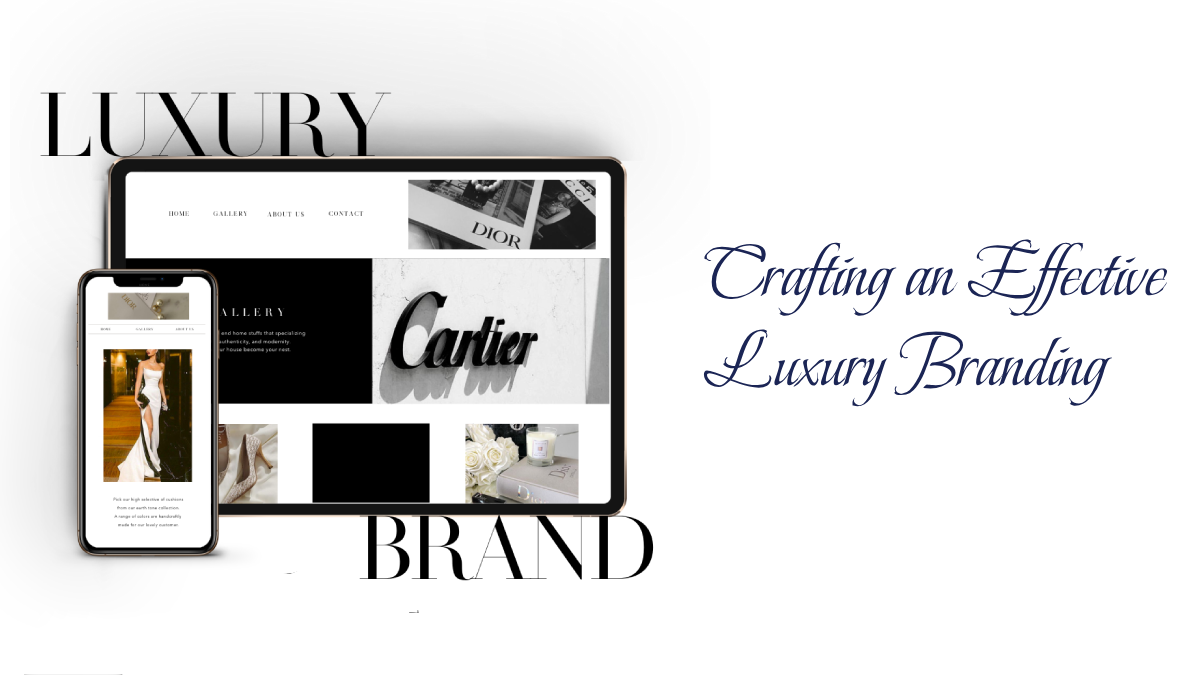Jun 23, 2023

One of the most pervasive domains in the last forty years that has captured the attention of companies and business firms is branding. How can businesses create strong luxury brands? How can they make such brands recognizable to consumers everywhere and at any time? What are the main success criteria that enable some brands to rule the world of brands?
A luxury brand is one that stands out for its high standards of quality, exclusivity, and cost. Luxury brands are prevalent throughout numerous industries, but particularly in the retail, hospitality, and automotive industries.
The main factor that makes a luxury brand is how exclusive it can be. Luxury brands are known for their high quality, but premium brands can also provide quality and sell to everyone. In contrast, luxury brands do not aim to serve the masses or make their products readily available, even at high prices. Luxury marketing relies heavily on scarcity, which is part of what makes it so appealing.
In order to successfully position your goods and influence your audience, you need a luxury branding strategy and execution that taps into that psychology. It is common for us to pay more for products we believe to be more genuine. As a result, price serves as a quality control. A fake Hermes bag sold on the street is incomparable to the genuine product in the nearby boutique.
Companies are more eager than ever to build strong brands, especially luxury brands that can boost their revenue base, improve their total brand equity, and broaden the base of their devoted customers, as the competition heats up and the trend towards commoditization continues. However, creating luxury brands is quite challenging.
These are your 5 steps for a strong and sustainable luxury branding strategy.
Clearly define your brand’s purpose, values, and positioning. Determine what sets your brand apart from competitors and identify your target audience. Research your audience’s preferences, needs, and aspirations. This step lays the foundation for building a consistent and compelling brand.
Your brand’s visual identity should reflect your brand’s personality and resonate with your target audience. The process involves designing a logo, choosing a color palette, selecting typography, and creating visual guidelines. In addition to your website, packaging, marketing materials, and social media profiles, your brand identity should be consistent across all touchpoints.
Clearly communicate your unique value proposition to your target audience with a clear and compelling brand message. This message should resonate with their needs and emotions. Consider creating a brand tagline or a memorable brand story that captures the essence of your brand and connects with your audience on a deeper level.
Consistency is key to building a strong brand. Ensure that all your brand elements, including your visuals, messaging, tone of voice, and customer experience, are aligned and consistent across all channels and touchpoints. Consistency builds brand recognition, trust, and loyalty.
Actively engage with your audience through various marketing channels, such as social media, content marketing, email marketing, and events. Provide value to your audience by creating meaningful and relevant content. Deliver exceptional customer experiences to build strong relationships and positive brand associations. Encourage customer feedback and address concerns promptly and effectively.
Read more about what to consider when Hiring a Rebranding Agency
French box-maker and packer Louis Vuitton founded the prestigious company that bears his name over 150 years ago. From modest beginnings in the French countryside, Louis Vuitton’s talent, inventiveness, and tenacity quickly led to the finest of the world desiring his characteristic trunks. The brand has since expanded its range to encompass bags, apparel, shoes, accessories, and jewelry, making it one of the most valuable luxury brands in the world .
Saint Laurent was born in Oran, French Algeria, on August 1st, 1936. With his two younger sisters, Michèle and Brigitte, he spent his childhood years close to the Mediterranean Sea. He became fixated on this dress after seeing Elsa Schiaparelli’s Saint-Laurent fashion show on July 6, 1948, when he was 12 years old. This outfit had a significant impact on his career.
Louis-François Cartier founded Cartier in 1847 at Rue Montorgueil, Paris, France, when he was 29 years old. He took over the artisan Adolphe Picard’s jewelry store. The workshop rose to fame in the city within a decade. Louis established the first Cartier store in 1859.
At MoonBox, we understand the power and prestige associated with luxury brands. We specialize in helping businesses like yours ascend to new heights by transforming your brand into a symbol of luxury and exclusivity. With our unparalleled expertise and strategic approach, we can guide you on the path to establishing an effective luxury brand that captivates your target audience.
Our team of seasoned professionals will work closely with you to develop a comprehensive brand strategy tailored to your unique identity and aspirations. We delve deep into your brand values, market positioning, and target demographics to craft a compelling narrative that resonates with discerning consumers seeking elevated experiences.
Undoubtedly, establishing a luxury brand today can appear challenging amidst the presence of well-established brands like Louis Vuitton and Prada in the current market landscape. However, by formulating a well-defined strategy to identify a niche customer segment and accentuate the brand’s symbolic value, brand managers in Asia hold significant potential to position and differentiate new, iconic luxury brands.
Recent examples of this trend include renowned luxury brands like Tiffany & Co. These esteemed fashion houses exemplify the art of crafting exquisite products that seamlessly blend traditional aesthetics and craftsmanship with a modern and contemporary twist, just like what Louis Vuitton and Prada have achieved in the market.
Building a strong brand is an ongoing process. Moonbox is one of the leading Branding Agency Dubai, we continuously monitor and adapt your brand strategy based on market trends, customer feedback, and the evolving needs of your target audience.
